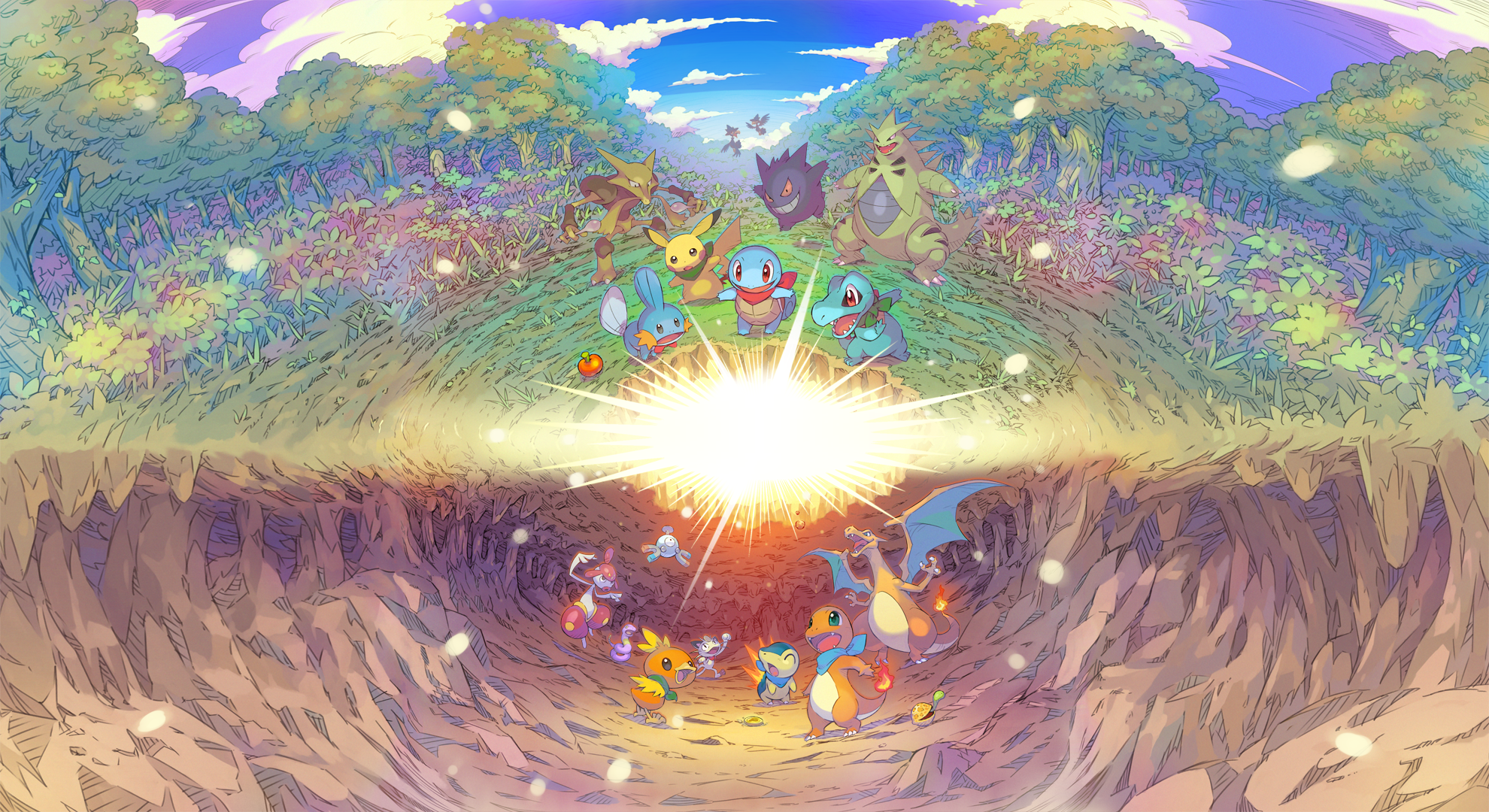The Mystery Dungeon games share a core formula: you wake up as a human turned into a pocket monster, you choose a partner, and then descend through procedurally generated dungeons to rescue your fellow Pokémon and uncover the reason behind your transformation. It’s straightforward and kid-friendly, but the series doesn’t shy away from complex themes or challenging boss battles. All 11 entries in this spinoff franchise continue the loop of dungeon spelunking and rescue missions, while layering on a dramatic plot that appeals to both fans of roguelikes and the classic Pokémon titles.
Rise and grind
The Mystery Dungeon franchise began with Red & Blue Rescue Team for Game Boy Advance and DS. It introduced us to the series’s grid-based, turn-by-turn exploration where you either search for a staircase, a target Pokémon, or an item. The missions are repetitive, but strong theming for each dungeon and a growing moveset help to keep you engaged. Failure in a dungeon sends the player back to town, and all carried money and items are forfeit. This harsh penalty is par for the course for fans of roguelikes.. However, Mystery Dungeon softens the blow by letting players stash valuables in the town storage box between runs, differentiating it from harsher roguelikes like Shiren the Wanderer.
The next installment, Explorers of Time & Darkness, made some major improvements to the formula, adding new Pokémon from the fourth generation of and expanding the size of the dungeons. It was literally more Pokémon Mystery Dungeon, and that’s all it needed to be. The Time & Darkness games introduced new mechanics, such as the hunger meter and Monster Houses, mini-combat gauntlets with tons of enemies in a tight space. These additions made exploration much more challenging and are a perfect callback to the roots of the roguelike genre—games like 1980s Rogue. The games feel more like a standard roguelike thanks to these changes, but the best improvement is the game’s story. Time & Darkness has an engaging narrative, emotional stakes, memorable character interactions, and feels unapologetically Pokémon. This era of Mystery Dungeon made narrative an essential pillar to the franchise’s identity, something less common in roguelikes from the late ‘00s.
Explorers of Sky is the enhanced third version of the Time & Darkness games. It doesn’t alter gameplay; instead, it adds more story and a layer of polish to Time & Darkness, keeping the challenge intact while introducing proper post-game quests to give the most dedicated players something new to strive for.
A wrong turn
The first 3DS entry, 2012’s Gates to Infinity, reimagined the franchise in full 3D, but also marked the moment the franchise began to decline in quality. Gates to Infinity simplified the formula to make it more approachable, getting rid of the ability to take on multiple jobs at once. No Pokémon is left behind with its change to the experience system, and all points are shared among all team members. Late-game exploration is much less grindy. While all of these changes may seem convenient on the surface, they come at a cost.
Gates to Infinity only includes fifth-generation Pokémon with a few sprinkled in from the previous generations—this completely gutted roster variety. While the narrative is ambitious, it fails to match the highs of the previous entry. While Gates to Infinity has appealing visuals and music, it strips back the roguelike depth introduced in the second generation of Mystery Dungeon games, making it a step backward in the series catalog.
In contrast, 2015’s Super Mystery Dungeon feels like an overcorrection. This 3DS title brings back the old style and content: every Pokémon from the first to sixth generation is recruitable, nearly all of the simplifications introduced in the Gates to Infinity are absent. Lengthy tutorials and cutscenes bog down the early gameplay. However, once you slog through the intro, the story becomes one of the best in the franchise. The problem, however, is that it boils the roguelike aspects of these games down to their bare essentials. Super Mystery Dungeon’s levels are randomized but not enough to feel like the elements are actually changing. Once you’ve seen one of the dungeon floors, you’ve seen them all. When compared to games like Spelunky and The Binding of Isaac, Super Mystery Dungeon opts to play it safe rather than attempting to push the roguelike genre into new territory. It’s more of an “Oh, you want old Mystery Dungeon? Here, now never ask me for anything ever again.” kind of game.
2020’s Pokémon Mystery Dungeon: Rescue Team DX is another step backwards, wallowing in the nostalgia of the original games instead of doing anything especially interesting. It offers numerous quality-of-life improvements, such as streamlined menus and controls, as well as the ability to skip the personality quiz and simply choose your preferred starter. It is a fine way to experience the first games if you haven’t already, and the refreshed art style is a nice plus, but if you’re familiar with the franchise, it’s an easy skip.
At its best, Pokémon Mystery Dungeon captures what makes both Pokémon and roguelikes so beloved: the sense that every journey matters. You could be scaling the intense 99-floor gauntlet of Destiny Tower, or even just rescuing a lost Caterpie. Even the simplest quests carry weight. That’s why, peaks and valleys aside, Mystery Dungeon is one of Pokémon’s most meaningful experiments—and one of the most important roguelikes ever made.



